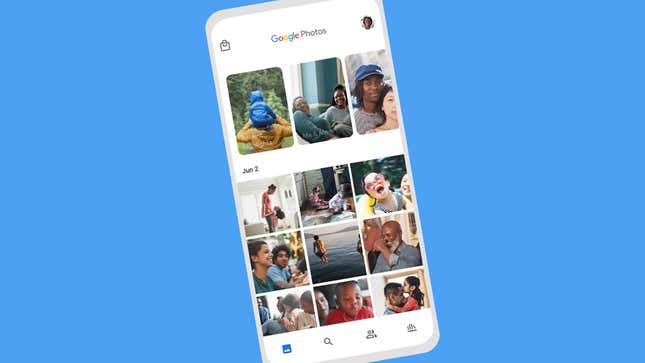
Big changes are coming to the way Google Photos stores your photos, and how much the company charges for storing your photos. If you’ve been taking advantage of Google’s free unlimited storage for pictures and videos in the cloud, that’s no longer going to be possible. Here’s what you need to know about what will be different starting June 1—and how to get ready ahead of time.
The changes mostly affect people using Google’s unlimited “high quality” photos and videos plan. For years, this plan has let users store an unlimited number of photos and videos in Google Photos without paying a dime, as long as they were OK with these files being resized down to a maximum of 16MP for photos and 1080p for video.
For a lot of people, that was a decent deal. Purists won’t like the downsizing of pictures and movies, but those 16MP and 1080p limits are as much as the majority of users are ever going to need for sharing with friends and posting to social media, especially if it means there is an unlimited amount of cloud storage in return. Or at least there was.

Compare this to the “original quality” photos and videos plan, where no resizing or compression takes place. If you’ve been storing your files this way, then you’ve been paying for some Google One storage, unless you’re still within the 15GB of room that Google gives you for free across Gmail, Google Drive and Google Photos.
From June 1, 2021, both “high quality” and “original quality” photos and videos will count against your 15GB of free storage and any Google One storage you’re paying for. The only difference is that the high-quality photos and videos will still be compressed and shrunk down where necessary, so if you’ve got a huge amount of snaps and clips you want to store, going “high” rather than “original” will save you some money—you won’t have to pay for as much room on Google’s servers.
Now for the small print, which is extensive. First, the unlimited-storage-for-high-quality plan is actually still available—as long as you own any Pixel phone, from the original up to the Pixel 5. Photos and videos backed up from these devices in (compressed) high quality, still don’t count toward your storage limit, even after June. (You may remember older Pixels offered unlimited backups in original quality as a perk, but those deals are dead or expiring soon, and weren’t offered on the most recent phones).

The second bit of small print is that any high-quality photos and videos you’ve already shifted to Google Photos are exempt from the change, irrespective of which devices you’re using. Google isn’t suddenly going to start charging you to store these files. The shift in pricing only affects photos and videos in high quality uploaded from June 1.
Next you need to know that the high-quality option is actually getting renamed Storage Saver, presumably to better reflect the fact that these photos and videos are compressed to save space. That rebranding is happening “soon,” Google has said.
A couple of new features are arriving in Google Photos to make it easier for you to keep your storage requirements down and maybe even stay inside that 15GB limit. More than 80% of users have about three years of capacity for high-quality photos and videos left in their free 15GB, Google estimates.

First, Google will tell you how much room it thinks you have left. From Google Photos, tap your profile picture (top right), then Account storage and Manage storage (or just go to this screen on the web). You’ll see your estimate at the top, whether you’re a free or premium user, and whether you’re using high quality or original quality for your backups.
Second, the Review and delete section on the same screen lets you see how much room is being taken up with files that you might not want to keep, like blurry photos and screenshots. Fun fact: Google Photos eliminates duplicates automatically, so if you try and upload a photo or video you’re already storing, only one copy is kept.
To see how you’re currently backing up images and videos from Google Photos, tap your profile picture in the app, then choose Photos settings and Backup and sync. From here you can choose the upload size of your photos and video clips, and select which device folders are included in the backup (like the WhatsApp media folder, for example).

Can you put the squeeze on original quality photos and videos so that they become high quality and save yourself some space? Yes, you can: Go to this page and click Recover storage to compress everything you’ve already backed up. You can do this once a day, and it doesn’t change anything about your future uploads.
This is all to pay for the cost of Google’s servers, of course. The company doesn’t use photos and videos to sell advertising, so it has to pay for its storage costs somehow. If you think original resolution photos and videos are worth it, and you’re going to be storing a lot of them, Google One storage prices start at $2 a month for 100GB of space, which will probably be enough for a lot of people.
There are alternatives to Google Photos, of course, but at this stage you’re going to end up paying someone something if you want to keep a substantial number of high-resolution photos and videos in the cloud so they can be accessible from anywhere. Local backup is still an option, but isn’t as convenient or as flexible as cloud storage.